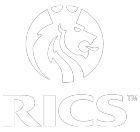Strategic Foresight: Stage 5 – Planning Strategic Options
Planning Strategic Options
Strategic planning options are the policy pathways that transport the realm of long-term, big-picture vision to the reality of the need for a set of actionable tactics to tackle present circumstances. Such planning thus provides an organisation with a roadmap showing how it can get from where it is, to where it wants to be. At Hillbreak, we aim to consolidate a client’s future policy framework into no more than five strategic planning options. We have found, moreover, that there are an array of common characteristics that distinguish and define a successful strategic planning exercise. These can usefully be summarised as follows:
1. Think Strategically
Strategic thinking is primarily about finding and developing a corporate foresight capacity for an organisation, by exploring all possible organisational futures, and challenging conventional thinking so as to foster better decision making today. It requires identifying assumptions about the future that might require examination, testing and subsequent modification. Most excitingly, such a futures approach through foresight can constitute an effective platform for collaborative planning. But, within client organisations, there has to be awareness, openness and a willingness to be disturbed! Strategy emerging from the bottom-up and employing unusual and remarkable sources is often best regarded.
Several major maxims make strategic thinking more impactful:
- Make the unique culture of the organisation central.
- Stimulate strategic conversation at all levels; don’t simply confine it to the ‘Executive’.
- Construct a ‘scaffolding’ of ideas; connecting, integrating and developing views from all around.
- Understand what needs changing, and what doesn’t. In the same context, recognise what essential processes and practices already existing within the organisation need preserving and promoting.
- Identify critical ‘branching points’ where an organisation reaches a position of strategic choice when different pathways offer varying views of how the future might play-out.
The challenge for corporate foresight in thinking strategically, therefore, is to help organisations achieve and sustain a ‘good fit’ within their evolving policy landscape so as to be able to anticipate and respond to transformational change effectively. This is about people every bit as much as it is about process.
2. Developing Strategic Policy Options
First, and foremost, strategic recommendations must be based on the distinctive attributes and abilities of an organisation. Foresight, of course, should always emphasise the external environment and take a longer, broader view; but the consultant must also be aware of the client organisation’s internal strengths and inherent deficiencies. Strategy, perforce, has to be developed around an organisation’s core resources and capabilities, and the need for building policy options from the inside out. Again, from experience, there are a few guidelines worthy of mention:
- Determine the way in which the organisation is ‘inimitably unique’, and how that uniqueness can best be turned into a continuing valuable concept, commodity or service. It is not always being good at something that counts, but being different!
- Imitating the best policies and practices of others is notoriously difficult and rarely successful. Anyway, if a plan, product, or process can readily be copied, its value will soon be competed away.
- Once the unique competency is developed, it can be leveraged across different parts of the organisation and the markets in which it operates.
- Before strategy is fully implemented, it should first be evaluated across multiple dimensions – performance measures, stakeholder perspectives and prospective timeframes.
- Include the “No-Go”, the “Most Plausible”, and the “Preferred” when recommending strategic policy options, so as to cover what to avoid, what is most likely to happen, and what to work towards.
It is, of course, good practice to stress-test strategy as much as practicable during its formulation; fixing any major mistakes after implementation can be extremely costly.
3. Examine the Issues
Defining a problem, and communicating it to others, so as to prepare an effective planning solution is a familiar task to all concerned in decision-making processes. A technique favoured and followed by Hillbreak comprises the following investigative process:
- Situation. Where are we now? What has been going on? And how do we think it’s working – or not?
- Complication. Something is happening, or looks likely to happen, that could significantly change the way we do things.
- Evaluation. There are a number of consequential factors influencing the way matters could materialise.
- Options. Several alternative courses of action present themselves, all of which have different outcomes.
- Recommendation. Given all the circumstances, a preferred policy option is selected.
In the context of strategic thinking in corporate foresight the recommendation would be framed as a positive policy option.
Conclude with contingency! In these volatile days of increasing risk and greater uncertainty, it should almost go without stating that the corporate foresight consultant must help the client prepare and rehearse contingency plans for the inevitable surprises that will occur over the longer, and even shorter, term. As Aristotle discerningly declaimed: “Probably something improbable will happen”!














